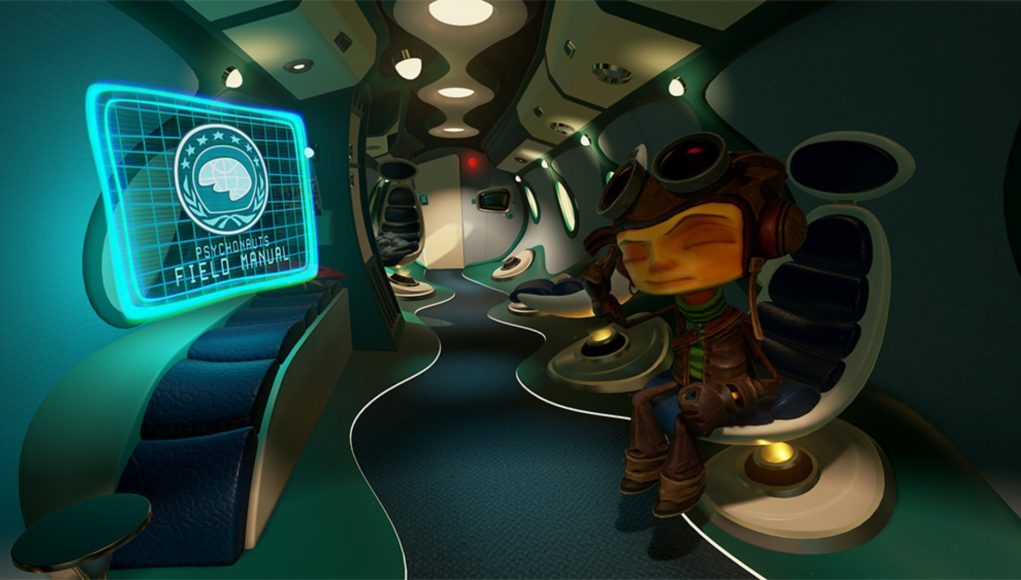Psychonauts In the Rhombus of Ruin takes place between the events of Psychonauts (2005) and the upcoming Psychonauts 2 due out later this year. Exclusively available in VR, In the Rhombus of Ruin strays from the 3D platformer genre of its flatscreen cousins and harks back to the early days of point-and-click games using a locomotion system that lets you teleport your consciousness into other living creatures.
Psychonauts in the Rhombus of Ruin Details:
Developer: Double Fine
Available On: Steam (HTC Vive, Oculus Rift, Windows VR), Oculus Home (Rift)
Reviewed On: Oculus Rift
Release Date: April 19th, 2018 (Feb. 21st, 2017 on PSVR)
Gameplay
The story picks up exactly where it left off at the end of Psychonauts—with Raz, Lili, Sasha, Milla, and Coach Oleander flying off to rescue Truman Zannotto, the Grand Head of the Psychonauts. For Raz’s first mission as a honest-to-goodness member of the super hero team, you’re taken into the heart of the Rhombus of Ruin, an ultra mysterious and dangerous part of the ocean similar to the Bermuda Triangle. With the rescue party’s plane drawn into the Rhombus of Ruin and held prisoners, you find yourself immobilized with only your psychic abilities to reunite the rest of the Psychonauts, reveal the identity of the mysterious kidnapper, and free Truman before the madness of the Rhombus turns everyone crazy. In short, it’s basically the plot of an animated adventure you might find in theaters or on Cartoon Network.
Despite being kidnapped and having your team put under a mind-bending spell by a mysterious nemesis, the game includes only one (very tame) combat situation while primarily focusing on puzzles. With the ability to teleport your consciousness to any living being in sight, you’ll explore levels and generally solve puzzles through buttons and levers, but also using some of your other psychic skills such as pyrokinesis and a psy-blast, a percussive surge of psychic energy.
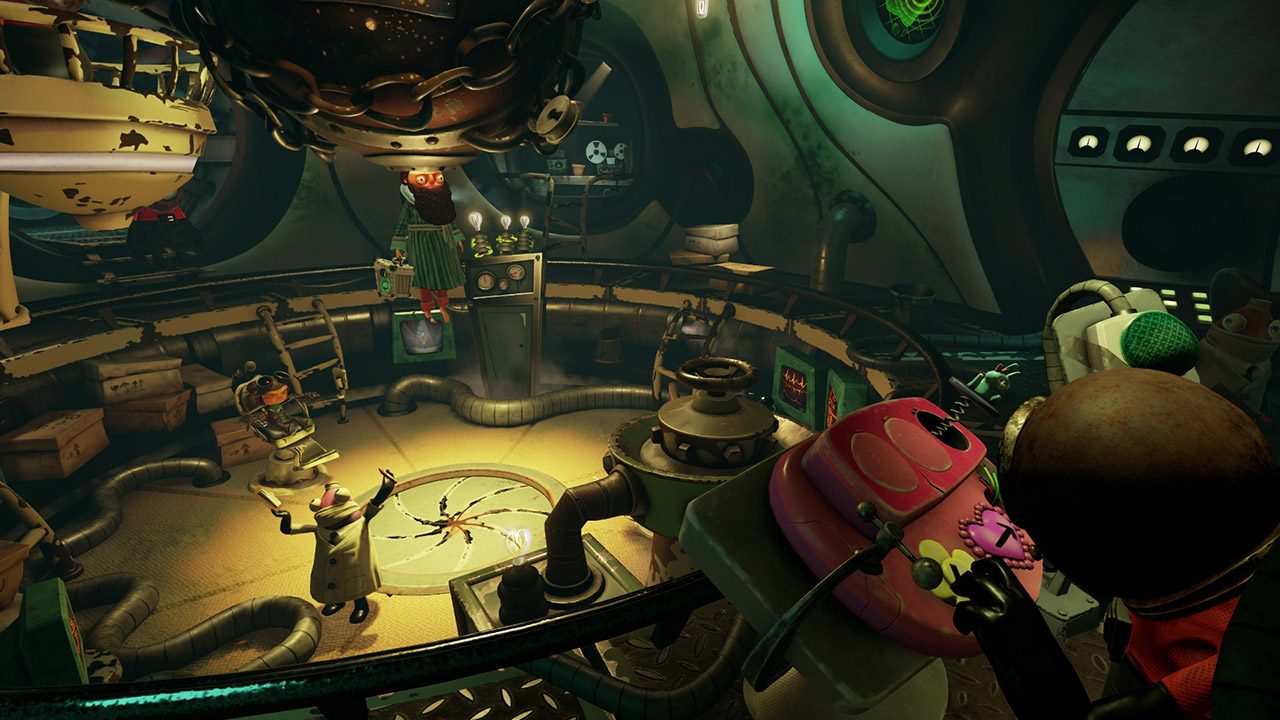
Puzzles range from extremely simple (find the code) to a little more taxing, but ultimately pretty easy difficulty level. Much to my chagrin, Raz the protagonist is voiced, so you’ll always have that helping hand to lead you through each puzzle. Personally I find this annoying on principle, because if you don’t immediately get something right, you’ll be forced to hear an exclamatory (and entirely unprompted) bit of repeating dialogue to the effect of “I wonder what will happen when I do this obvious solution.” The voice acting itself is very well done however, taking the edge off what might otherwise be a fun-breaking annoyance. In the end, I found the puzzles varied, but too simple to really keep my attention.
Humor is on the campy side, but it’s the sort of corny dad jokes that make you groan, but also smile a bit too; that’s the Psychonauts franchise for you.
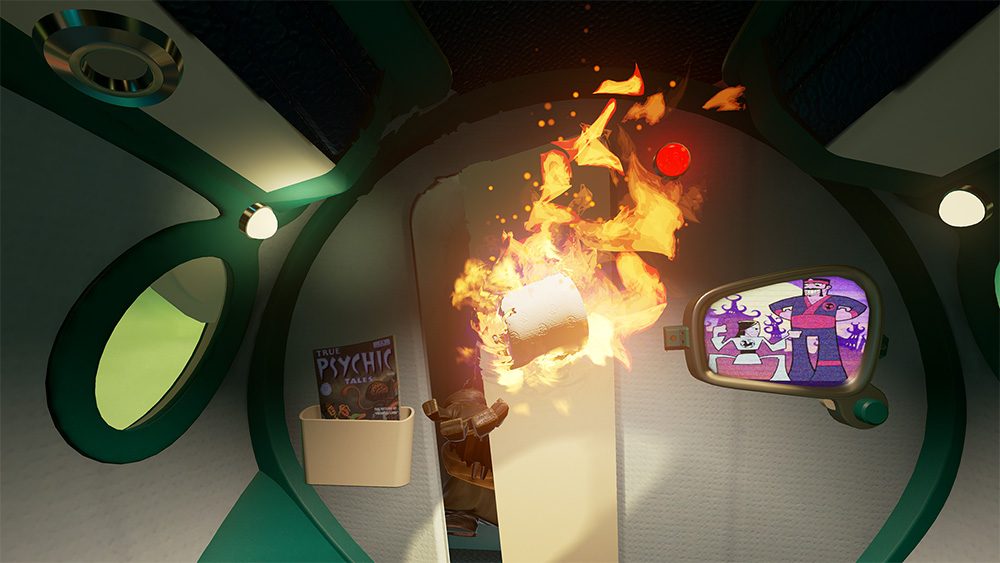
Level design, while only allowing for a straight path through the game, takes you through an interesting assortment of environments. After a while though, the whole forward push through got a little too paint-by-numbers for me, as you teleport from nodes that always appear on cue, be it a fish that conveniently swims into view or a rat that scurries out from a hiding place just in time. Combined with the fact that you’re constantly swept along by Raz’s helpful direction, there’s unfortunately little to no true exploration to be had—a shame considering how inviting everything seems.
In the end, I found the 1.5 hour gameplay length on the short side, including an abrupt ending that left me a little deflated.
Immersion
One of the first things you notice about the Psychonauts in Rhombus of Ruin is just how good everything looks. The art style totally captures an incredible vibe that actually makes you feel like you’ve stepping straight into a late ’90s Saturday morning cartoon.
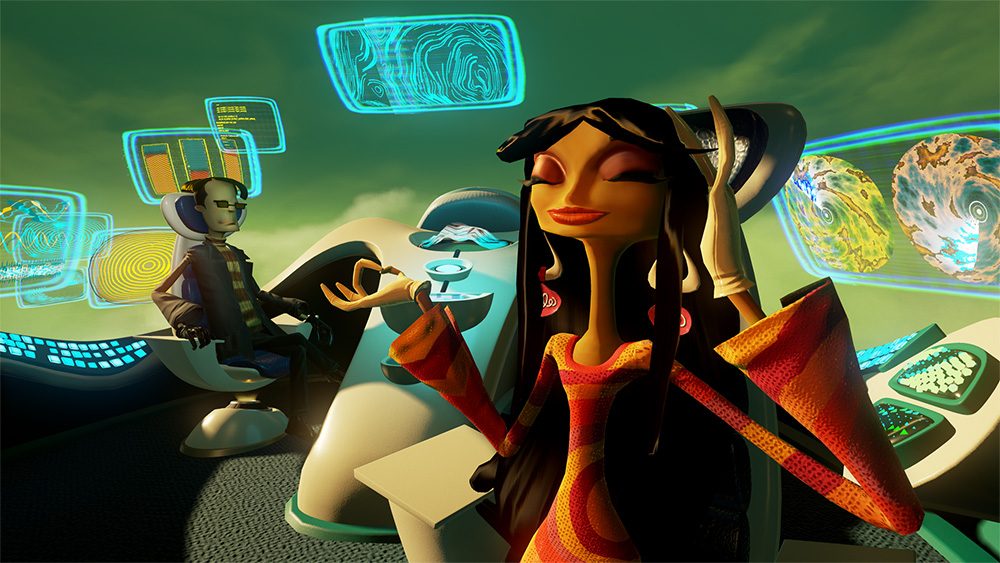
The character design is nothing short of masterful, not only making good use of color and texture, but also shows great attention to detail in how characters express themselves. To that effect, I felt the world’s humanoid characters creep a little too close to the uncanny valley—if only because of how human they acted while still appearing truly bizarre from the 1:1 immersive viewpoint of a VR headset. It’s not something I got too hung up on though, because most of the time you’re zipping from one cartoony animal to the next, or to the occasional diving suit-wearing antagonist.
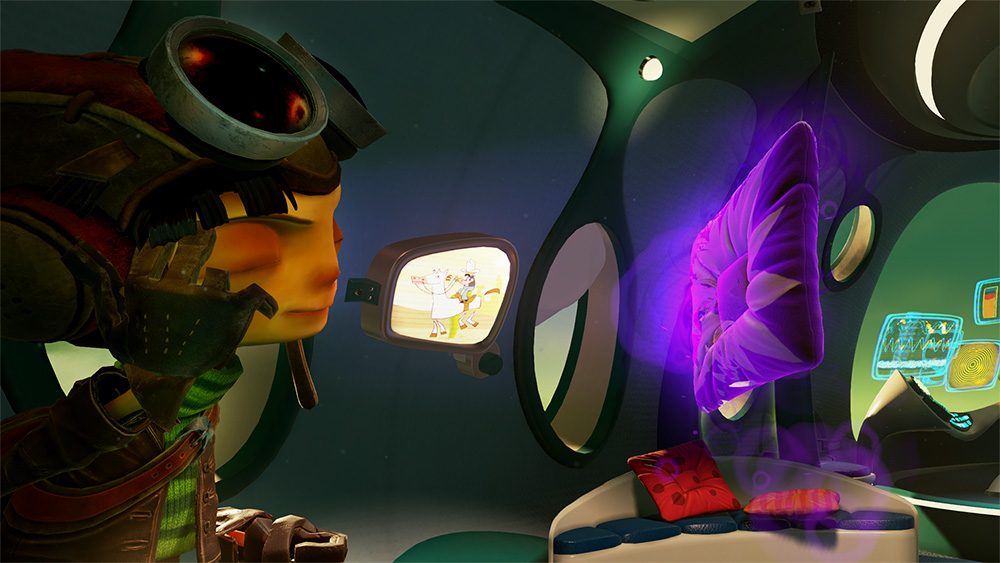
Hand presence is unfortunately nill, as you are a bodiless, handless entity that pops into the minds of other people and species. But even when you should have arms, you don’t, making it a little less immersive than it could have been. Since you don’t have any hands, you interact with the world’s many objects through telekinesis, which fits in well at least.
My primary beef immersion-wise with Rhombus of Ruin is the constant chatter from both Raz and your teammates, but you’ve already heard me gripe enough about that. From the difficulty level to the art style – everything leads me to believe Psychonauts is skewing more for the younger teenage crowd, and let’s face it: those people don’t know when to shut up, so it’s a lot less damning than I make it seem on face value.
Comfort
Gaze-based controls, while fitting the whole psychic ability motif, can be fiddly at moments. Highlighting and selecting an object or node isn’t always an easy task, and I found myself having to use my neck for something it isn’t designed for—as a fine point device that I know with time can lead to neck strain. Because of the relative length of the game, I didn’t have any issues with my neck seizing up, but I wouldn’t want to go in for a 2 hour session if it the game were somehow longer.
Besides that, node teleportation is by far one of the most comfortable ways of moving through a VR game, although it carries with it the usual caveats of limiting the visual continuity, knocking a few ticks from the player’s overall immersion.

